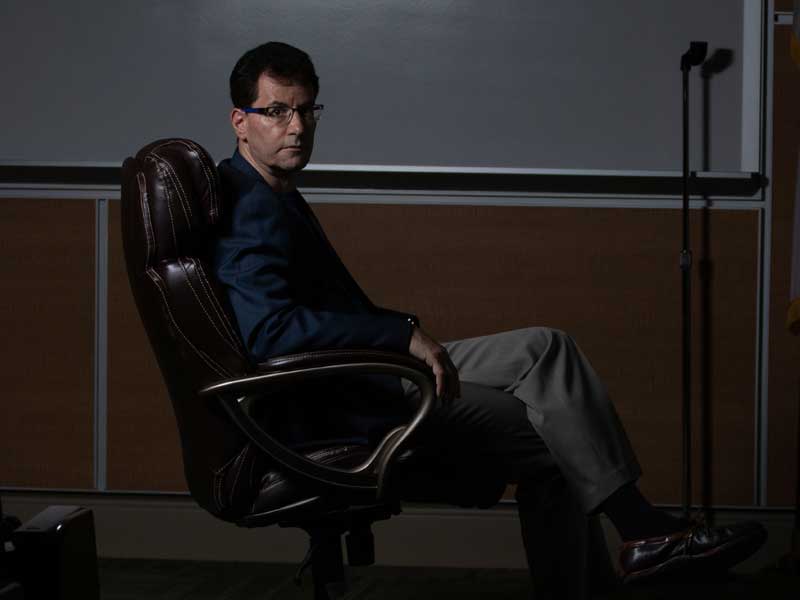A type of grief experts call prolonged and complicated causes some 10 million Americans to suffer, experts say. But a fairly new type of therapy is believed to offer help for many of them.
Often felt by seniors who have lost their longtime spouse, this grief is characterized by an ongoing, daily yearning for the one they lost — feeling emotionally numb and having difficulty moving on with life.
“There’s a trauma aspect to the grief,” said Dr. Kevin Kip, USF professor, epidemiologist and biostatistician says. And prolonged, complicated grief is a significant cause of depression, anxiety, suicide and poor physical health in older adults.
“It’s a longing for the person, an empty purpose to life. These people are haunted by the death and are continually ruminating about it. In that way, it’s a lot like post -traumatic stress disorder [PTSD].”
Kip and his USF Health College of Nursing colleague, Dr. Cindy Tofthagen, PhD, ARNP, AOCNP, FAANP, are embarking on a two-year study looking at a type of psychotherapy—called accelerated resolution therapy (ART) — that has proven effective with sexual assault victims and military personnel suffering with PTSD.
The study, funded with a $275,000 grant from the National Institute on Aging, will examine the usefulness of ART in treating 50 senior citizens who have lost an immediate family member in hospice care within the last 12 to 18 months. The seniors must be suffering with prolonged, complicated grief, as determined by a qualified clinician.
Trauma symptoms include agitation, irritability, flashbacks, mistrust, anxiety, social isolation, loss of interest, insomnia and emotional detachment.
ART International considers post-traumatic stress a symptom and not a disorder. Post-traumatic stress and other traumas can be caused by exposure to war, natural disasters, sexual assault, physical and emotional abuse, accidents, death and other distressing situations that leave lasting memories which can interfere with life as usual.
Unlike traditional talk therapies used to treat conventional grief, ART focuses on two things: desensitizing the patient to the signs of physical distress — a fast heartbeat, nausea, etcetera — that emerge when thoughts of the death arise and re-imagining the past with the loved one in a more positive way.
The desensitization is achieved by asking the patient to first recognize and label the uncomfortable physical feelings, and then to follow the clinician’s hand as it moves left to right.
“This simple act is stress-reducing and helps the patient become desensitized to those unsettling physical sensations,” Kip says. “And they will change the feelings the memories bring by imagining it in a positive way.”
ART therapy brings up the painful memories and reframes them. “We might ask patients what life was like when the loved one was sick,” Kip says. “Then we might ask them to add some memories of what life was like before he or she was ill. We are asking them to add positive material to the memory.
“That re-imagining is done all while following the clinician’s hand, an important piece of ART therapy,” he says. “When you ask the brain to do two things at once, you tax working memory. And when you overload the memory, it dilutes some of the emotionality of a traumatic experience. When you go to store that memory back in the file cabinet of your brain, it’s modified to include new, more positive information.
“It has a calming effect; a quieting down,” Kip says.
ART has never been studied as a therapy for complicated grief, and Kip and Tofthagen are excited by its promise. It may be a cost-effective and time-saving solution for grief-stricken spouses, especially since seniors with prolonged, complicated grief can develop other health issues.
“Multiple losses compound the trauma that people are going through,” Tofthagen says. “If they don’t have good coping skills, they may never be able to get back to normal life, and that affects their health. They develop cancer more often, heart disease and depression. It’s like a cascade.”
Kip said while grief has no set timetable, many people are able to go back to prior routines or regain some semblance of normalcy in thei daily lives after a loss. When that does not happen after a year or so, it can be identified as “complicated grief,” and possibly greatly helped by ART.
If the results are promising, the study may lead to a larger undertaking, to a study including multiple sites to get a wider sampling of patients.
ART International Executive Director Kelly Breeding said the work Kip and Tofthagen are doing is very important to ART. “It is groundbreaking for us,” she says.
The foundation is seeking to increase the number of clinicians certified in this treatment. More than 100 training sessions are being held throughout the U.S. this year.
Various locations have residents who may need the therapy for various reasons. In Hawaii, lava eruptions have caused trauma, and in California, wildfires.
Licensed clinicians, including psychologists, psychiatrists, social workers, marriage and family therapists and mental health counselors are eligible to participate. Therapists who complete the training will earn 21.5 CEUs and are immediately certified to use ART in their practice.
For more information on ART International’s upcoming training sessions, or to song up for a session, go to https://artherapyinternational.org
By Mary Toothman
